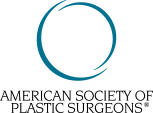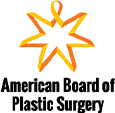It all Starts here
Saline vs Silicone Gel Filled Implants, Part #1
Posted by Laurence Weider on November 6, 2012
One of the most frequently asked questions in my practice relates to the choice between saline and silicone gel filled breast implants. Over the next two blogs I will review the pros and cons of each type of implant. Once a woman is considering having a breast augmentation in Dallas, she needs to decide whether to choose saline or silicone gel filled breast implants. In my practice in Dallas, my patients are about evenly split between those choosing silicone and those opting for saline. During the first installment, I will highlight the advantages of saline implants. The second installment will focus on the advantages of silicone gel filled implants.
Both types of implants have a silicone elastomer shell. The current generation of implants has a thicker shell than earlier generation implants. The thicker shell makes them stronger, more durable and less susceptible to leakage.
It is the fill material of the implants that varies. Saline filled implants are quite simply filled with sterile salt water. Because they are filled in the operating room, the surgeon is able to vary the amount of fill in each implant to correct small discrepancies in breast size. The silicone gel filled implants, on the other hand, are prefilled during the manufacturing process, so their fill volume cannot be adjusted.
Another key difference between the two types of implants is leakage detection. While both types of implants have low leakage rates, the saline filled implants will deflate when they leak, typically making the leakage easy to detect for the patient and the surgeon. The saline is absorbed by the body and is harmless. If a silicone implant leaks, it is likely that the patient won’t be aware of it. This is because the gel will typically stay in the implant or in the pocket around the implant. Because of this, the FDA has recommended that women with silicone gel filled implants undergo an MRI three years after surgery and every two years after that in order to detect asymptomatic implant leakage. It is concern about a silicone leakage that could go undetected that many women site as the reason they chose saline implants instead of silicone gel filled implants.
Cost is another key factor that differentiates these two types of implants. A pair of silicone implants costs about $1000 more than a pair of saline filled implants. The price difference reflects the additional cost charged by the implant manufacturer. In my next blog, I will focus on the advantages of silicone gel filled implants.
Dr. Weider, a native of Southern California, is a Board-Certified Plastic Surgeon who has maintained a private practice in Dallas, TX since 1999. After attending Stanford University, he obtained his medical degree (M.D.) from Baylor College of Medicine in Houston. He then completed a one year surgical internship in Los Angeles at Harbor-UCLA Medical Center, followed by a four year general surgery residency in Dallas at Methodist Medical Center, and a two year plastic surgery fellowship in Cleveland at Case Western Reserve University.







